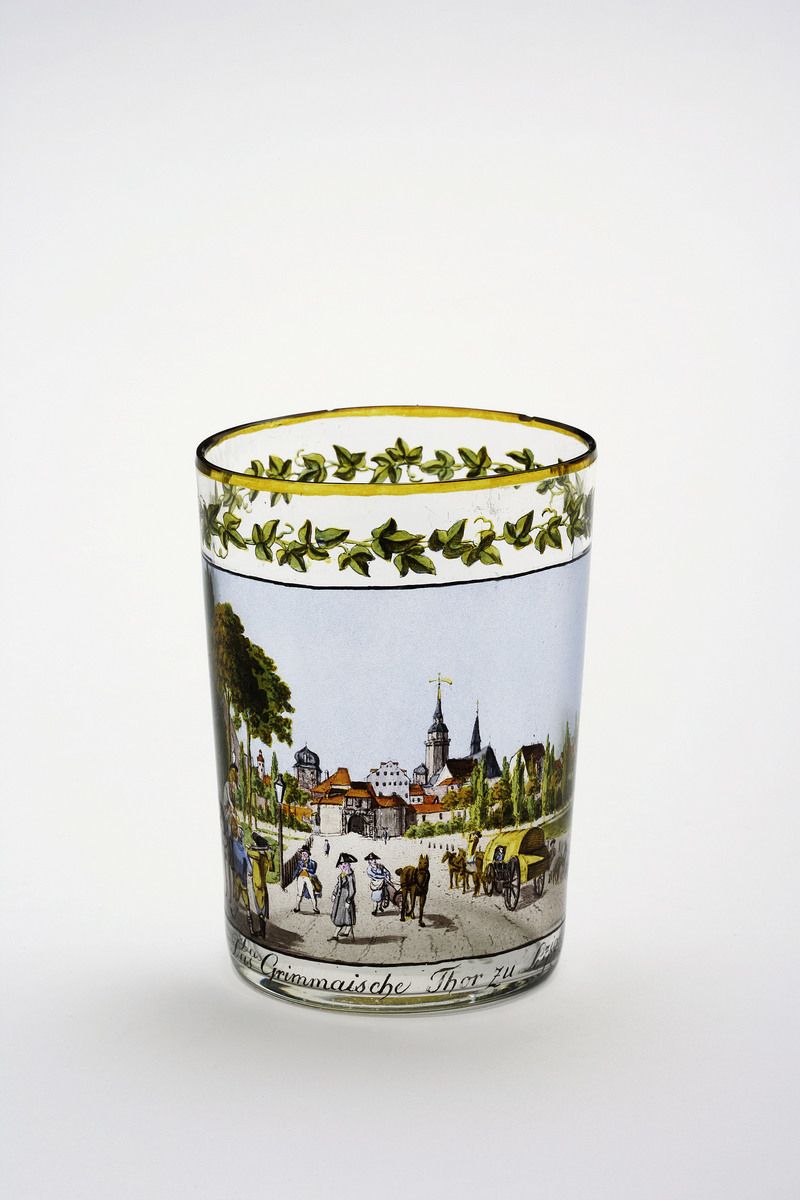Source

Source: Grassi Museum Leipzig, Inv.-Nr. 1930.269
Samuel Mohn (1762–1815) was a Dresden glass decorator who in the early nineteenth century revived and refined the art of painting scenes on clear glass in transparent or translucent enamel. The technique allowed for realistic depictions of figures and objects with bright and colorful light effects for customers of the upper and better-off middle classes. Glass decorators had a variety of motifs at their disposal: they could cater to the bourgeois taste for decorative floral borders and Arcadian figures, or they could render recognizable cityscapes and buildings, creating tourist souvenirs or tangible expressions of civic pride. The drinking glass shown here depicts a street leading into the commercial city of Leipzig and includes a mix of military men and civilians of various stations in life. In 1815, Leipzig carried positive associations as the site of Napoleon’s decisive defeat by Allied and Prussian forces just two years earlier in October 1813. The Grimma Gate, in fact, was the site where the Prussians had staged a major breakthrough into the French-occupied city on the final morning of a nearly six-day battle. Alternatively, Leipzig in 1815 may have also appealed to both Saxon and German patriots as the city that had just been saved for the Kingdom of Saxony against Prussian efforts to acquire it during the Congress of Vienna.

Source: Grassi Museum Leipzig, Inv.-Nr. 1930.269
© Grassi Museum für angewandte Kunst, Leipzig. Photo: Christoph Sandig